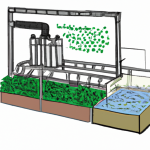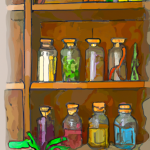Honey for Wound Care: A Prepper’s Secret Weapon
When it comes to surviving in a post-disaster world, being prepared is key. We stock up on food, water, and medical supplies, but have you considered the power of honey in your emergency kit? Honey has been used for centuries as a natural remedy for various ailments, including wound care. In this article, we will explore the healing properties of honey and how it can be a valuable asset for preppers.
The Healing Power of Honey
Honey is no ordinary sweetener; it is a natural wonder with incredible medicinal properties. One of its most notable characteristics is its ability to promote wound healing. Here’s how:
- Antibacterial Properties: Honey’s high sugar content creates an osmotic effect that helps draw moisture out of bacteria cells, making it difficult for them to survive. Additionally, honey produces low levels of hydrogen peroxide, acting as a natural antiseptic.
- Anti-inflammatory Effects: Honey contains antioxidants and anti-inflammatory compounds that can help reduce swelling and pain around a wound.
- Moist Wound Healing: Honey’s viscous consistency creates a moist environment that promotes faster healing and prevents the formation of scabs, reducing the risk of infection and scarring.
- Stimulates Tissue Regeneration: Honey stimulates the growth of new tissues and blood vessels, aiding in the healing process.
Using Honey for Wound Care
Now that you understand the healing properties of honey, let’s talk about how to utilize it for wound care in an emergency situation:
- Choosing the Right Honey: Not all honey is created equal when it comes to wound care. Look for raw, unfiltered honey, preferably from local sources. Manuka honey, a type of honey from New Zealand, is highly recommended for its exceptional medicinal properties.
- Cleaning the Wound: Before applying honey, it’s crucial to clean the wound thoroughly with clean water or saline solution. Remove any debris or foreign objects carefully.
- Applying Honey: Apply a thin layer of honey directly to the wound, ensuring complete coverage. For deep wounds or areas that require bandaging, use sterile gauze or non-stick dressing along with honey.
- Changing the Dressing: Depending on the severity of the wound, you may need to change the dressing and reapply honey daily or as instructed by a healthcare professional.
Benefits of Honey in Prepping
Having honey in your emergency kit offers numerous advantages:
- Sustainability: Honey has an indefinite shelf life, making it a long-lasting option for wound care.
- Accessibility: Honey is readily available and can be sourced locally, reducing the reliance on pharmaceutical products.
- Cost-effective: Compared to specialized wound care products, honey is a cost-effective alternative.
- Multiple Uses: Besides wound care, honey can also be used as an energy source, food preservative, and natural sweetener.
Remember, in a survival situation, prompt wound care is essential to prevent infections and complications. By including honey in your prepping supplies, you are equipping yourself with a valuable resource that can aid in wound healing and promote better overall health.




GIPHY App Key not set. Please check settings